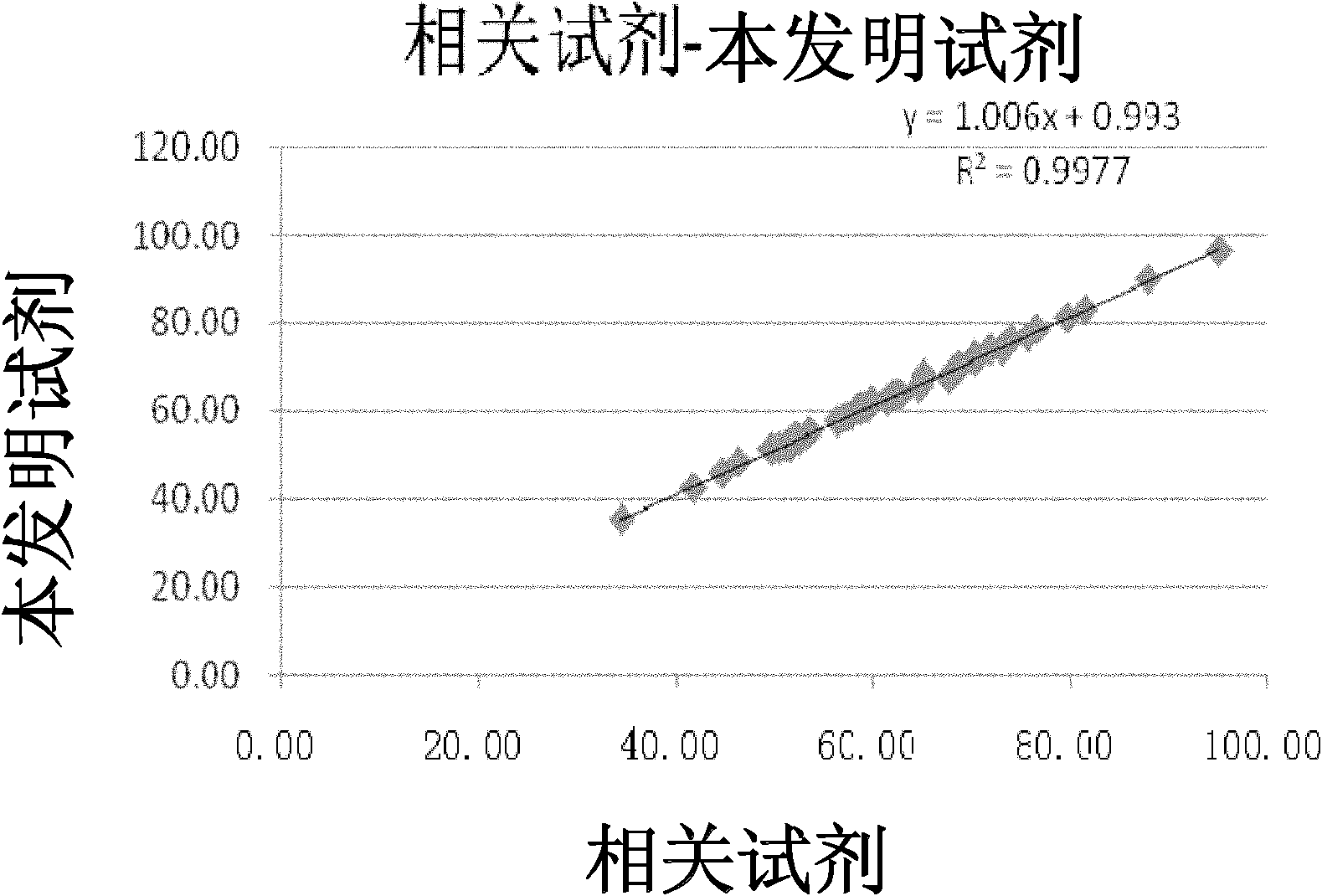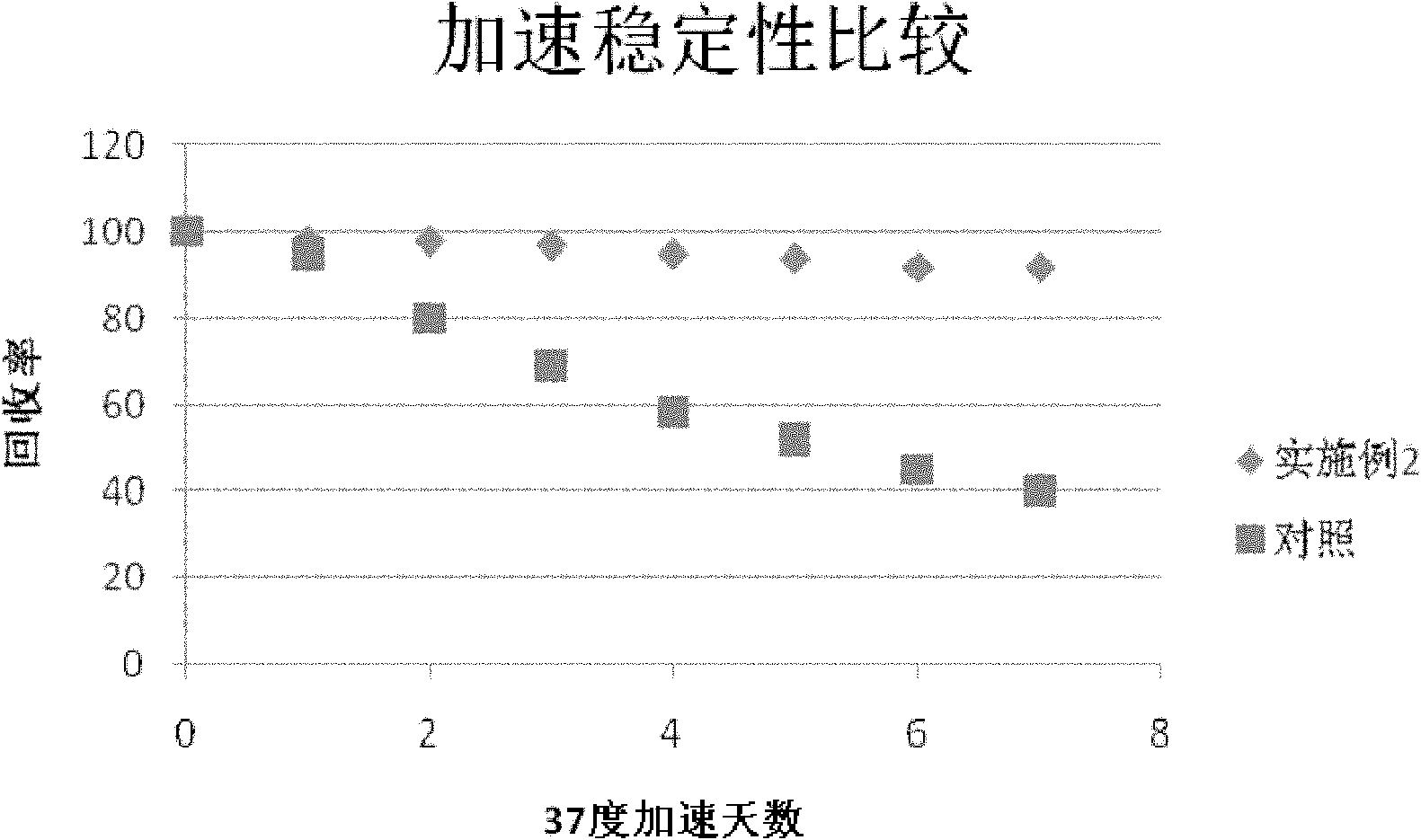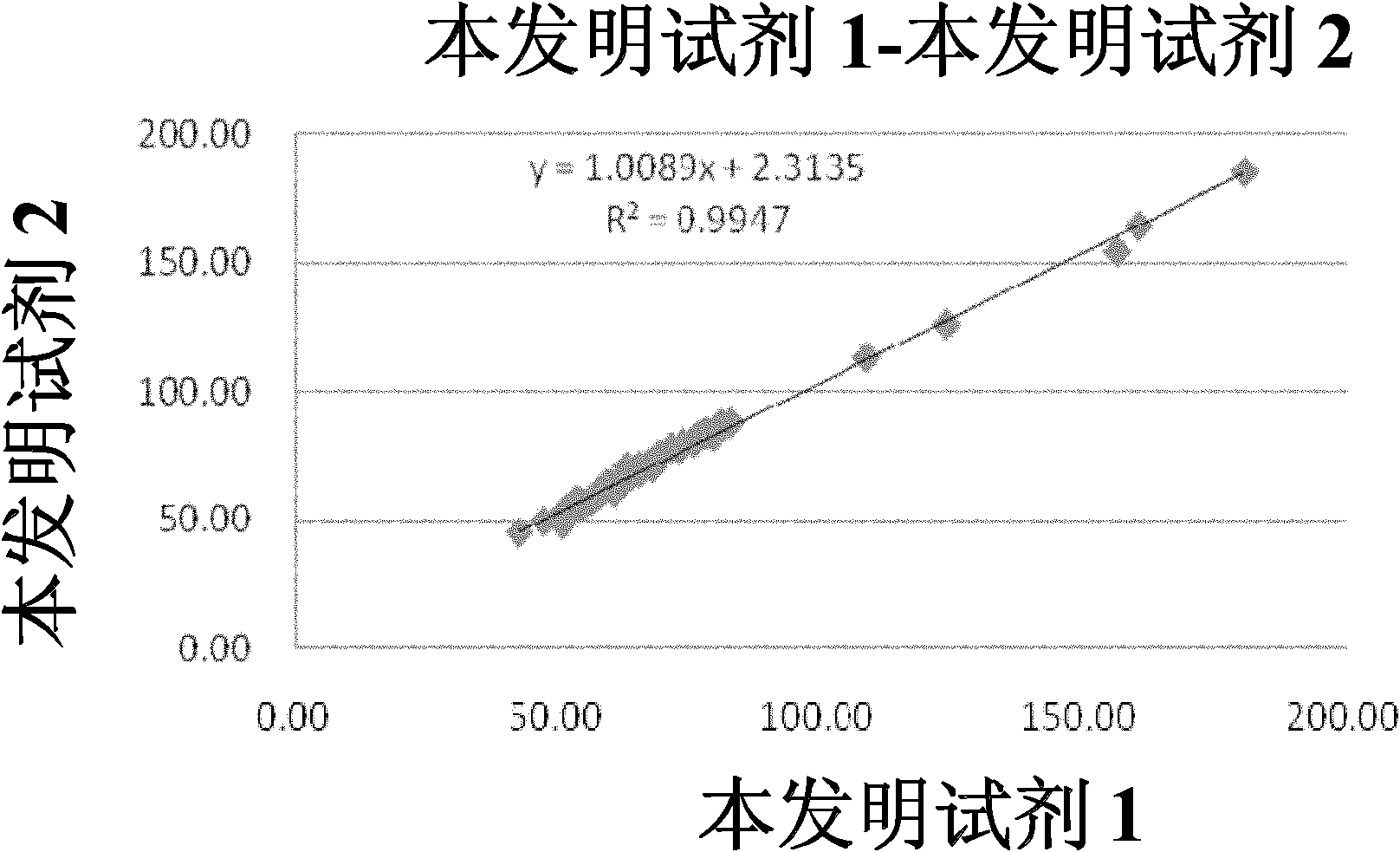Method and kit for stably detecting sialic acid by enzyme method
A technology of sialic acid and kit, which is applied in the field of enzymatic detection of sialic acid, which can solve the problems of few applicable models, inability to meet clinical detection needs, and short stability period
- Summary
- Abstract
- Description
- Claims
- Application Information
AI Technical Summary
Problems solved by technology
Method used
Image
Examples
Embodiment 1
[0084] Embodiment 1 adopts the SA detection kit of single reagent
[0085] The reagent of the kit adopts a single reagent, and the components and concentrations of the reagents are as follows:
[0086] Neuraminidase 50KU / L
[0087] Neuraminic acid aldolase 50KU / L
[0088] Oxidized coenzyme NAD 0.1mmol / L
[0089] Mannosamine dehydrogenase 50KU / L
[0090] MES buffer 100mmol / L
[0091] Polyethylene glycol 0.05%
[0093] The pH of the reagent is 7.0, where the stated percentages are weight to volume.
[0094] The method of using a single reagent is as follows:
[0095] Table 1: How to use a single reagent
[0096]
sample
standard blank
standard
serum
60ul
standard
60ul
60ul
Reagent I
1800ul
1800ul
1800ul
[0097] Mix well and react at 37°C for 10 minutes, adjust to zero with pure water, and measure the absorbance change of each tube.
[0098] Calculati...
Embodiment 2
[0101] Embodiment 2 adopts the SA detection kit of double reagent
[0102] The kit’s reagents use dual reagents, and the components and concentrations of reagent 1 are as follows:
[0103] Neuraminidase 80KU / L
[0104] Oxidized coenzyme NAD 4mmol / L
[0105] HEPES buffer 100mmol / L
[0106] Polyethylene glycol 0.1%
[0107] Sodium Benzoate 0.1%
[0108] Reagent 1 has a pH of 6.5, where the percentages are weight to volume.
[0109] The composition and concentration of reagent 2 are as follows:
[0110] Neuraminic acid aldolase 10KU / L
[0111] Mannosamine dehydrogenase 60KU / L
[0112] HEPES buffer 400mmol / L
[0113] Glycerol 5%
[0115] Reagent 2 has a pH of 7.2, where the percentages are weight to volume.
[0116] The dual reagents are used as follows:
[0117] Table 2: How to use the dual reagents
[0118]
[0119]
[0120] Mix well and react at 37°C for 10 minutes, adjust to zero with pure water, and measure the absorbance change of...
Embodiment 3
[0124] Embodiment 3 adopts the SA detection kit of double reagent
[0125] The kit’s reagents use dual reagents, and the components and concentrations of reagent 1 are as follows:
[0126] Neuraminidase 100KU / L
[0127] Oxidized coenzyme NAD 4mmol / L
[0128] HEPES buffer 100mmol / L
[0129] Polyethylene glycol 0.1%
[0130] Sodium Benzoate 0.1%
[0131] Reagent 1 has a pH of 6.5, where the percentages are weight to volume.
[0132] The composition and concentration of reagent 2 are as follows:
[0133] Neuraminic acid aldolase 10KU / L
[0134] Mannosamine dehydrogenase 100KU / L
[0135] HEPES buffer 400mmol / L
[0136] Glycerol 5%
[0137] Sodium Azide 0.1%
[0138] Reagent 2 has a pH of 7.2, where the percentages are weight to volume.
[0139] Its usage method is as the kit in Example 2.
PUM
 Login to View More
Login to View More Abstract
Description
Claims
Application Information
 Login to View More
Login to View More - R&D
- Intellectual Property
- Life Sciences
- Materials
- Tech Scout
- Unparalleled Data Quality
- Higher Quality Content
- 60% Fewer Hallucinations
Browse by: Latest US Patents, China's latest patents, Technical Efficacy Thesaurus, Application Domain, Technology Topic, Popular Technical Reports.
© 2025 PatSnap. All rights reserved.Legal|Privacy policy|Modern Slavery Act Transparency Statement|Sitemap|About US| Contact US: help@patsnap.com



